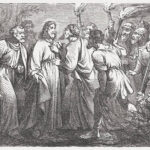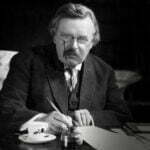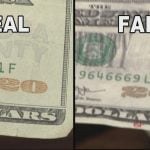A review of The Case for the Real Jesus. By Lee Strobel.
Zondervan, 2007. (Available in Australia from Koorong Books)
The most important person in human history has always come under attack, but it seems that in the past few decades an especially concentrated attack on Jesus Christ has taken place. This has come in the form of claims about missing or suppressed gospels, alternative Christianities, and church cover-ups.
The most famous of course was the fictional hatchet job on Christian orthodoxy, The Da Vinci Code by Dan Brown. Others include the supposed discovery of the tomb of Jesus, the so-called Gospel of Judas, and a host of other wild claims, often promoted more by Hollywood and hype than by sound biblical scholarship.
TV documentary makers, Internet bloggers, and a credulous media have been happy to promote such “finds” but more sober heads have roundly condemned these reckless claims. Indeed, a number of important biblical scholars and New Testament experts come together in this volume to make the case for the traditional understanding of Jesus and the Gospels, and to highlight the silly and vacuous nature of these various attacks on the faith.
Lee Strobel, who as an investigative journalist and atheist, had set out to disprove the Christian truth claims, only to become convinced of their veracity, here interviews these experts in an attempt to set the record straight. He has done this with three previous volumes in the same vein: The Case for Christ (1998), The Case for Faith (2000), and The Case for a Creator (2004).
By interviewing leading experts in various fields, Strobel presents a compelling and powerfully argued case for the traditional understanding of who Jesus is and why we can trust the Gospel accounts. He examines a number of these recent accusations in some detail, demonstrating the paucity of the charges being made, and the strength of the orthodox case for Christianity.


Consider the claim that there are many other gospels which are on a par with the canonical four Gospels. To tackle this claim he interviewed leading New Testament scholar Craig Evans. He begins by explaining how we can judge the reliability of an ancient text.
A crucial test involves when the document was written. Obviously the closer it was written to the events in question, the more accurate it should be. And it turns out the four Gospels are extremely reliable by this criterion. The Gospel of Mark, for example, was penned in the 60s, some three decades after the ministry of Jesus.
Compare that with something like the Gospel of Thomas, which at its earliest would have been written around 175 to 200. It is much further removed from the time of Jesus, therefore far less reliable as an authoritative source.
Another issue is the geographical connection. A document written “in the Eastern Mediterranean world thirty years after Jesus’ ministry,” says Evans, “is more promising than one written in Spain or France in the middle of the second century”.
All the so-called lost or alternative gospels were penned much later than the four Biblical Gospels which have “credible connections with the first generation, apostolic, eyewitness sources”.
A related challenge, that of the possibility of the biblical texts being corrupted, is dealt with by Daniel Wallace, a world authority on New Testament manuscripts. An expert in the science of textual criticism, Wallace is well-placed to enter this debate. He begins by pointing out that the Bible is the only religious scripture in the world intended to be subject to historical inquiry. It claims to be a historical document which invites rigorous investigation.
Wallace claims there is an “embarrassment of riches” when it comes to the New Testament documents. Unlike any other book in ancient history, the New Testament is fully supported by excellent manuscript evidence. For example, there are thousands of copies of manuscripts, making it much easier to determine the contents of the original.
There are 5,700 Greek copies of the New Testament, either in part or whole. There are also another 10,000 copies in Latin, in addition to Coptic, Syriac, Georgian and Armenian versions. In total, we have perhaps 30,000 handwritten copies of the New Testament. Says Wallace, the “quantity and quality of the New Testament manuscripts are unequalled in the ancient Greco-Roman world”. By way of contrast, the average Greek author “has fewer than twenty copies of his works still in existence, and they come from no sooner than five hundred to a thousand years later”.
Another accusation is that Christianity’s views about Jesus were merely borrowed from pagan religions. For this challenge Strobel enlists the aid of Edwin Yamauchi, one of the world’s leading authorities on ancient mystery religions. Having studied 22 ancient languages, and written 200 papers for professional journals, he is the expert to go to on this topic.
He is not impressed with the claims that Christianity simply copied these mystery religions. For example, the late Roman mystery religion Mithraism is often appealed to, but its flowering occurred “after the close of the New Testament canon, too late for it to have influenced the development of first-century Christianity”.
The evidence is clear, as another scholar puts it: the weight of scholarly opinion is against any attempt to “make early Christianity dependent on the so-called dying and rising gods of Hellenistic paganism”.
Strobel looks at other claims, such as the charge that new explanations have discredited the resurrection of Jesus, and finds them also to be wanting. The responses to the six major challenges presented in this volume make it clear that the faith of Christianity as established in the ancient creeds is in fact rock solid, and that the trendy new criticisms and charges are easily refuted.
The case for the real Jesus still stands, and Strobel is to be congratulated for bringing together in one volume so many world-class experts who can so ably take on the wild charges being made against Jesus and the Gospels. While there are a number of books now out doing a similar thing, this is a very good place to begin. It covers all the bases and does an admirable job of presenting the evidence for the real Jesus.
[1011 words]




















Thanks Bill. It is good and unsurprising to know that there is so much evidence supporting “The Case for the Real Jesus”. Another reason supporting the NT’s veracity is its strong ties with the OT scripture. Many prophecies from the OT are fulfilled in the NT. The NT could hardly be accurate otherwise.
It’s no wonder there are so many attempts to discredit Christianity at the moment when you consider how rapidly these attempts can spread with today’s technology and the fact that the devil’s time left is getting shorter and shorter.
Matthew Mulvaney
What I loved most about reading through Strobel’s “The Case for Christ” was that he clearly illustrated the rational, logical process for belief in the Christian faith. All too often the cry of attack from anti-christian antagonists is that Christians have blind-faith. This couldn’t be further from the truth. Ours is quite a reasonable faith.
I’m yet to read this one, but I likewise applaud Strobel’s cause to illustrate just how simply reasonable and logical Christianity is.
Strobel’s books also sell for next to nothing – Bill’s fav Christian book store sell copies of “The Case for Christ” for only a few dollars; much better and more detailed than handing out tract-packs.
Mathew Hamilton
Matthew,
This is a good point:
“It’s no wonder there are so many attempts to discredit Christianity at the moment when you consider how rapidly these attempts can spread with today’s technology and the fact that the devil’s time left is getting shorter and shorter.”
Christianity is the most attacked religion now and historically. Atheists home in on Christianity above all other belief systems. It is the largest religion in the world and wherever this isn’t the case there is rapid expansion of belief. Only Christianity’s Jesus has become a swear word, weird “alien” encounters all tend to carry anti-Christian messages, and so fourth.
It’s almost as if the other belief systems are not attacked because, well, they aren’t true. All the effort goes against Christianity, specifically Jesus. To me that always added veracity to the scripture.
Michael Mifsud
I have had many opportuinities to share my faith due to these kinds of attacks on Jesus and the bible. I have taught apologetics for many years at my church to equip other believers about how much the world wants to do away with Jesus but they can’t! I thank all those attackers because it has caused me to sharpen my sword to defend the holy word of god and jesus christ my savior.
Greg De La Luz
Hi Bill, have you read The Case for Christ by Lee Strobel which is now out as a movie?
Thanks Paul. Yes I have read all of Strobel’s helpful volumes.